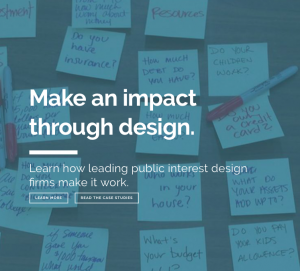 Public Interest Design Firms
Public Interest Design Firms
At EntreArchitect, we’re learning that we need to build a better business so we can be better architects. We want to make the work a better place. That’s why we became architects in the first place. We want to provide a positive social impact. What if by building better businesses we built a better world? What if a part of what we do benefits the public in an impactful way? Stay tuned as we share a new online resource to learn more on this idea.
This week at EntreArchitect Podcast, Public Interest Design Firms with Mia Scharphie and Gilad Meron of Proactive Practices.
Mia’s Origin Story
Mia has a masters in landscape architecture but feels that she’s secretly a social worker with designer skills. She’s always been interested in people who get left out and how to bring them back in for most of her life. She worked at a nonprofit in San Fransisco, Public Architecture, that takes on design challenges that the private market doesn’t have an incentive to be involved in.
Today she runs Creative Agency, a research and design consulting practice that works with affordable housing and arts organizations focusing on projects that use creative tools to make change and Build Yourself Workshop, an empowerment workshop for women in creative fields teaching women how to negotiate, be an advocate, and be proactive.
Gilad’s Origin Story
Gilad has a background in design from a program called Design and Environmental Analysis, an interesting mix of social science research and architecture and design. He got involved in participatory planning and design as a method to shake the environments we live in. That led to public design or community design, as some like to call it.
Currently he’s on the board at The Association for Community Design doing research writing with nonprofits and foundations who do different types of community development work. Living in New Orleans, he started a small coworking space and design collective, The Blue House, where others can come and have dialogue about civil issues.
What is Proactive Practices?
Proactive Practices is a web publication that collects case studies on socially impactful design firms. They’re mostly looking at the different ways that designers design for social impact and find ways to do that within their business models. They aren’t just telling the stories and the beauty of the project, but to look at the organizations that make these projects possible. They want to know how you can build a business where you can create social impact over and over again.
What inspired you to do this?
Mia, Gilad and Nick, their third teammate, had all previously worked or interned at Public Architecture in San Fransisco. At the time, with a limited amount of experience, they had to figure out what pieces were relevant for them to begin the work. Through that organization, they were connected with many people in the growing field of public interest design. There were a public interest projects in that area, but no examinations of the practices behind those projects. They wanted to understand how firms were being built to sustain practices that focused on this kind of work instead of doing just one random project. When they dove in further, they realized the complexity of research they needed to build an understanding. Over the last few years, they’ve gathered lots of insights as to what would be needed and useful to understand the full scope of how these firms practice.
A personal incentive came from the motivations to work at or run a firm like some of the ones they’ve studied. From an up-and-coming professional who wants to start a firm or a mid-career professional shifting practices, they wanted to understand how to build a practice around this type of work.
Since each of them has different strengths, they push each other and come to a better synthesis of what’s going on and what they can take from it to grow.
How did you decide what kind of firms to include in your research?
As they were trying to figure out what types of firms to profile, they wanted to get a wide range of the types of ways that public interest design is practiced. There are for-profit firms, non-profit firms, hybrid firms, as well as a range of different sized firms.
Are you seeing a lot of firms that want to have social impact as a part of their model?
One firm they work with didn’t intend to have a socially impactful firm, but realized that was the kind of work she wanted to do through her experience working with Architecture for Humanity and other socially impactful projects. Since they have a whole set of approaches, they can connect with different types of firms that may not have started out in this direction. It’s been interesting for them to see how different first get into this kind of work; some are there “right out the gate” and sometimes it’s a personal commitment that finds an expression later. They specifically worked to profile a huge diversity for a reason so their readers can connect no matter what kind of firm they’re intesrested in exploring.
There’s a fundamental shift in the way that professionals are thinking about impactful design: less as an idealistic goal, but more a third leg to sustainability.
This is no longer something people just want to do, it’s a smart business decision to attract young professionals who have an interest in doing this.
Will there be a Proactive Practices model for businesses to utilize?
As they’ve been generating the project, they’ve realized there’s strategies for everything. How will your staff work? What skill sets do you have? Who will you work with and what can you offer them? How might you be different than a traditional firm?
Part of what they’ve done with the design of the case studies is to encourage people to figure out what they can take away from it in order to benefit their firm. Sometimes people forget that whether you’re a nonprofit or for-profit, you still have to have more revenue than you have expenses or you’re out of business. Proactive Practices wants to look at sustainability, and that can take some time to build. At the end of the day, you have to be providing value that someone is willing to pay for and translate that to your target audience.
What’s next for you?
They want to continue producing case studies and have also thought about turning the research into teaching tools for students. Right now, they’re focused on finishing the first set of ten case studies.
Connect with Mia, Gilad and Nick online at ProactivePractices.org or on social media by keeping up with #ProactivePractices on Twitter @MiaScharphie and @GiladMeron.
Visit our Platform Sponsors
TruStile is a leader in high end, architectural interior doors. Visit them at TruStile.com to learn more!
Tanglewood Conservatories combines the romanticism of the 19th century glass architecture with state-of-the-art technology today. Learn more at TanglewoodConservatories.com.
Referenced in this Episode
EntreArchitect Profit Plan Course (free)
Inscape Publico
Leighton Design Group
The post EA148: Public Interest Design Firms [Podcast] appeared first on EntreArchitect // Small Firm Entrepreneur Architects.
